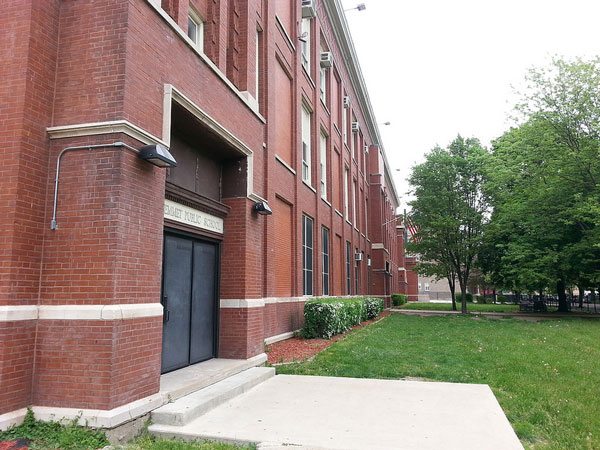
July 25th, 2017; The Chicago Reporter
In 2013, Chicago mayor Rahm Emanuel closed 50 schools due to declining enrollment and shrinking public funds. Most of the school buildings are still vacant, in part due to the city’s failure to outline a clear process for deciding what to do with them.
Originally the responsibility to dispose of the buildings rested with the city’s aldermen, but when they failed to find buyers over three and a half years, the district took over. On Chicago’s West Side, Key Elementary in Englewood and Emmet Elementary in Austin, two majority-black schools, have been the sites of particularly rancorous debates.
The Chicago Reporter noted in January,
Emanuel said residents would have a say in turning the former schools into facilities that would benefit the surrounding neighborhoods. Yet four years later, two-thirds of the buildings are still vacant. There are no common standards for community involvement in determining their reuse. And aldermen, who until recently oversaw the process, have not held public meetings to discuss the future of about half of the schools, including Key.
Various proposals have included a health center, an innovation center, and low-income housing subsidized by low-income housing tax credits (LIHTC). Developer Rob Ferrino’s company was poised to turn Emmet Elementary into a $24 million health center, but when investors learned that community support was lacking, they jumped ship.
“It was never about the project necessarily, but the fact that we were not included in the conversations,” said Cata Truss, a resident who attended several meetings on Emmet.
“There’s a way that things need to be worked through,” said Amara Enyia, who directs the Austin Chamber of Commerce. “We have to make it clear to developers that you have to get buy-in on the front end, instead of having to backtrack.” Now Emmet is back up for public bid.
Sign up for our free newsletters
Subscribe to NPQ's newsletters to have our top stories delivered directly to your inbox.
By signing up, you agree to our privacy policy and terms of use, and to receive messages from NPQ and our partners.
NPQ noted in 2015 that vacant schools are a drain on the community; they’re hard to sell, and when a purchase does go through, the price is usually short of the projection.
Chicago’s rash of school closures is in part a result of racially motivated school policies in the 1960s and 1970s. Neighborhoods like Austin were growing, and black families were moving in, but “the district often built new schools rather than redraw boundaries that would put black and white students in the same schools,” according to the Reporter. The school-age population of these neighborhoods has since declined, and Chicago Public Schools’ enrollment has dropped steadily since 2002.
A study from the Great Cities Institute at the University of Chicago Illinois concluded, “Building utilization and student performance were predictors of these closures, but so was the race of students in each school. Specifically schools with larger shares of African American students had a higher probability of closure than schools with comparable test scores, locations, and utilization rates.”
Racial factors led to the building of the schools, and racial factors led to closing them, even though less than ten percent of CPS students are white. Now, a messy process and unfulfilled promises to the communities that have suffered the most closures keep dilapidated buildings from being renewed.
Several schools, such as the Ward school in Humboldt Park, are slated for low-income housing, if funding can be found. Developers are hoping to use low-income housing tax credits (LIHTC) to finance the transformation. Applications for the LIHTC are open in Chicago this year for the first time since 2011, and promise to give preference to repurposed buildings, to “help alleviate the negative impact that vacant and/or deteriorated buildings can have on neighborhoods.” However, competition for the tax credits will be fierce. Developer Scott Henry said, “The city’s resources are scarce and there’s a lot of really terrific projects out there.” NPQ noted earlier this year that the LIHTC program, though it enjoys enormous success and bipartisan support in Congress, may be threatened by a lower corporate tax rate.
Asiaha Butler, the president of the Resident Association of Greater Englewood, added that it’s important that the developments are more than just affordable housing; she wants to see workforce development and an urban farm in the space. “The community has to be at the forefront of what happens to these institutions,” she said, and the community has the smarts to want investment and revitalization without gentrification.
After all the drama suffered the past few years in Chicago schools—teacher strikes, the failure to pass a state budget, threatened takeover by the governor, reduced school funding, and the closures—it’s about time that community involvement and investment become part of the CPS strategy. Communities have found their voice and are fighting back against state-imposed initiatives; looks like there might be some civic sector investment opportunities here.—Erin Rubin













